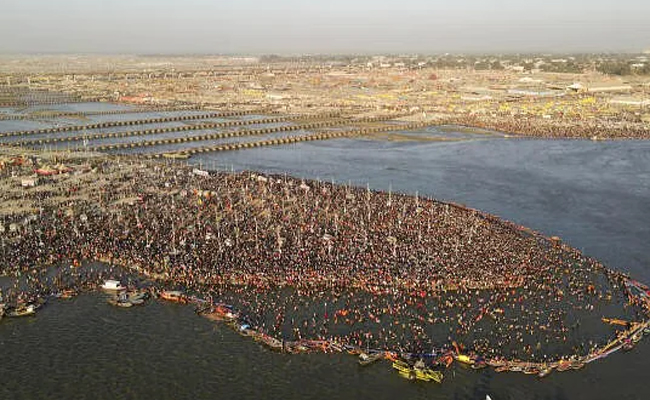
India News

During the Kumbh Mela, millions of devotees are taking holy dips in the confluence of the Ganga and Yamuna rivers. Many incidents related to this grand event have made headlines. While the mass bathing itself and the arrangements for it are a significant undertaking, there have also been tragic stampedes during the rush to bathe, leading to fatalities. In another incident, a stampede occurred at the Delhi railway station involving Kumbh Mela pilgrims. Along with these incidents, there has been turmoil over attacks on trains by the pilgrims. When we see videos of these attacks, they send chills down the spine, and it's best not to speak too much about them.
In addition to all this, it has been revealed that the water in which millions of devotees are bathing is not even suitable for drinking, let alone bathing. While foreign media organizations might make such claims, no one would take them seriously, but it is the central government’s own organization that has clarified this.
The National Green Tribunal responded on this issue, referring to a report from the Central Pollution Control Board on February 3. According to the report, the water in the confluence of the Ganga and Yamuna is not fit for drinking, and even bathing in it is not advisable. This was the situation on February 3, but since then, millions of devotees have bathed in the same water. In the vicinity, millions of people have been performing natural bodily functions as well, which further increases the pollution levels.
According to central government organizations, the water quality standards set by the government in 2004 require that the level of fecal coliform in water should not exceed 500 MP/100mL for it to be considered safe for bathing. If the level exceeds 2500 MP/100mL, the water is classified as polluted.
However, as of February 3, the fecal coliform levels in the Ganga and Yamuna waters were reported to be around 9000 MP/100mL. In some places, this level even reached 11,000 MP/100mL. The minimum reported level was 5000 MP/100mL, according to government agencies. It is unclear how much this level has increased since then.
As a result, the water not only contains bacteria and viruses but also protozoa, which can lead to serious health issues, as confirmed by government bodies. Bathing in such water is also not safe, as per the central government’s guidelines. However, the devotees continue to ignore these warnings, showing little regard for the risks involved.
Advertisment